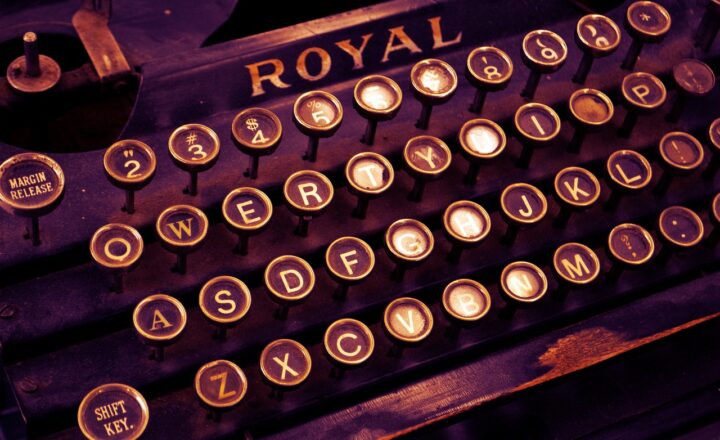
History is often depicted as a series of battles, treaties, and great leaders. However, behind the scenes, many unexpected friendships and rivalries have shaped the course of events. In this article, we’ll explore the intriguing relationships between ten famous historical figures, revealing how their alliances and enmities impacted their lives and the world around them.
1. Thomas Jefferson and John Adams: Friends Turned Foes
Thomas Jefferson and John Adams, both Founding Fathers and future Presidents of the United States, initially shared a close friendship rooted in their revolutionary ideals. They collaborated on the Declaration of Independence and bonded over their visions for a new nation. However, political differences as members of opposing parties—the Democratic-Republicans and the Federalists—created a rift that turned their friendship into bitter rivalry.
Despite their estrangement for several years, Adams and Jefferson revived their friendship later in life through a series of letters, ultimately expressing mutual respect and admiration. Their correspondence offers profound insights into early American politics and philosophy.
2. Nikola Tesla and Thomas Edison: Friends or Foes?
The relationship between Nikola Tesla and Thomas Edison is a classic case of collaboration overshadowed by rivalry. Initially, Tesla worked for Edison, collecting a promised reward for successfully redesigning Edison’s inefficient machines. However, when Edison dismissed Tesla’s ideas and refused to pay him, their friendship soured.
This set the stage for what became known as the “War of Currents,” where Tesla, advocating for alternating current (AC), vied against Edison’s direct current (DC) system. Their conflict not only defined the future of electrical engineering but significantly influenced the deployment of electrical systems across the globe.
3. George Washington and Alexander Hamilton: Allies in Arms
The dynamic duo of George Washington and Alexander Hamilton is a brilliant example of friendship forged in the heat of battle. Washington, as Commander-in-Chief during the American Revolution, recognized Hamilton’s talents and appointed him as his aide-de-camp. Their partnership was pivotal in strategizing successful military campaigns.
After the war, Hamilton became the first Secretary of the Treasury under Washington’s presidency. Their strong bond significantly influenced the foundation of America’s financial system, showcasing how mutual respect and collaboration can create lasting legacies.
4. Karl Marx and Friedrich Engels: Intellectual Companions
Karl Marx and Friedrich Engels are often regarded as the fathers of communism; their friendship blossomed through shared ideals and intellectual pursuits. They met in the early 1840s and quickly developed a partnership that resulted in the publication of the “Communist Manifesto” in 1848.
Engels provided substantial financial support to Marx, allowing him to focus on his writing and research. Their collaboration and mutual support not only enriched Marx’s work but also had a profound impact on socialist movements worldwide.
5. Sigmund Freud and Carl Jung: Mentors and Rivals
Sigmund Freud and Carl Jung began as mentor and mentee, sharing a deep intellectual connection around the emerging field of psychoanalysis. Freud valued Jung’s insights into the human psyche, often considering him a potential successor.
However, as their theories diverged—particularly regarding the role of sexuality in psychology—tensions escalated, leading to a public break. Their relationship exemplifies how shared groundbreaking work can evolve into a rivalry, significantly affecting the development of psychological theories.
6. Martin Luther King Jr. and Malcolm X: Parallel Paths
Though Martin Luther King Jr. and Malcolm X represented different approaches to civil rights—nonviolent protest and militant activism, respectively—their mutual respect for each other is often overlooked. Initially, they were wary of one another, reflecting the broader tensions within the civil rights movement.
However, as time progressed, both leaders recognized the importance of their respective missions. In the last years of his life, Malcolm X began to express admiration for King’s dedication to equality, suggesting that an alliance could bridge their philosophies.
7. Theodore Roosevelt and William Howard Taft: Friends to Foes
Once close allies in the Progressive movement, Theodore Roosevelt and William Howard Taft eventually became political adversaries. Roosevelt handpicked Taft as his successor, believing he would continue his progressive reforms. However, Taft’s presidency took a more conservative turn, leading Roosevelt to run against him in the 1912 election.
Their split not only fractured their friendship, but also divided the Republican Party, illustrating how political alliances can shift dramatically over time.
8. Cleopatra and Julius Caesar: A Political Alliance
The relationship between Cleopatra and Julius Caesar was driven not just by romance but also by political necessity. Their affair solidified Cleopatra’s position as queen and gave Caesar a powerful ally in Egypt. Together, they attempted to restore the waning glory of Egypt, and their bond resulted in the birth of a son, Caesarion.
However, when Caesar was assassinated, Cleopatra’s political future changed dramatically, showing how alliances can shift based on circumstance and political aspirations.
9. Winston Churchill and Franklin D. Roosevelt: Allies during War
Winston Churchill and Franklin D. Roosevelt developed a strong friendship during one of the darkest periods of World War II. Their partnership was essential in strategizing against the Axis powers and maintaining morale among their respective nations.
They communicated regularly, sharing insights and strategies while fostering deep mutual respect. Their alliance laid the groundwork for the United Nations, demonstrating how friendship can lead to significant political collaboration for global peace.
10. Marilyn Monroe and Ella Fitzgerald: A Friendship Born of Compassion
Marilyn Monroe is often remembered for her glamorous Hollywood persona, yet her friendship with singer Ella Fitzgerald reveals a more compassionate side. Monroe used her influence to help Fitzgerald gain access to better performance venues during the era of racial segregation.
This unlikely friendship transcended the racial divides of the time and demonstrated how personal relationships can impact social change.
Conclusion
The friendships and rivalries among these historical figures not only shaped their lives but also influenced the world around them. From the alliances that forged nations to the enmities that led to political upheaval, the stories of these relationships remind us that personal connections are often at the heart of history. The complexity of human relationships reveals that friendship and rivalry can coexist, affecting the course of events in remarkable ways. Understanding these dynamics enhances our comprehension of history and illustrates the nuanced human experience behind the significant figures who shaped our world.







